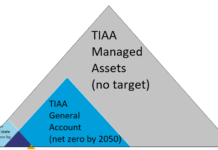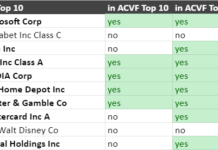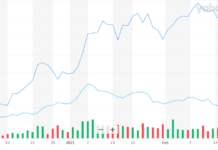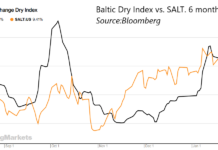There is no shortage of things to worry about as we start 2023. The Federal Reserve is (rightly, in our opinion) worried about inflation becoming entrenched, and so is likely to continue hiking interest rates for much of 2023. Putin looks unlikely to concede defeat in Ukraine, and his desperation may lead to escalation, potentially even of the nuclear variety. California seems to be washing away while remaining in a drought.
China has loosened the zero-Covid policies that helped the country continue functioning during the first stage of the pandemic, while much of the rest of the world shut down. Unfortunately, the policy was remarkably successful at keeping people from catching the virus, meaning that the population has little natural immunity to the now more infectious strains of the virus circulating today. Combined with a weak vaccination policy, Chinese infection rates, hospitalizations, and deaths from the virus are skyrocketing. This is both a human tragedy, but also a source of considerable uncertainty regarding the country’s ability to continue to fill supply chains the world over.
In short, expectations for the world economy in 2023 are looking to be somewhere between A Clockwork Orange [1971] and The Exorcist [1973 and 2023] on the Hollywood scale of economic prospects.
When it comes to the stock market investing, investor mood swings tend to overshoot. If we think other investors are tuning in to horror movie marathons, it’s often a good move to surf on over to the Disney Channel for a little hope in the face of adversity. At the Foundation Green Income Fund, our mood is less Texas Chainsaw Massacre [1974] and more Up [2009]. 
Without a doubt, there are going to be moments when things don’t look good for our animated stock market heroes in 2023, but we’re feeling optimistic about the prospects for the clean energy income stocks that are the core of our portfolio. The horror movie watchers have knocked valuations back down from the romantic comedy highs we saw at the end of 2021, and new policies like the inflation reduction act and Europe’s push for free itself from Russian fossil fuels are both greatly boosting the chances of an uplifting ending, despite the challenges. The Russians are likely to inspire clean energy stock market progress. Call it an October Sky [1999] theme for 2023.
The stock market is never without risk, so investors need to focus not on avoiding risk, but looking for those times and places where the potential downside is already reflected in prices, but the potential upside is not. Those times come and go in both the market as a whole, and sectors.
Since I started writing for AltEnergyStocks.com in 2007, I’ve only been more optimistic as I am now three times. In early 2016. A group of clean energy infrastructure stocks called Yieldcos had gone through a bubble which popped in mid-2015. Those same Yieldcos were trading at great valuations, and I bought lots of tickets to that feel-good movie, leading to a couple great years for my “10 Clean Energy Stocks” model portfolios in 2016 and 2017.
Similar great movie and investment opportunities for the whole market were released in 2020 at the height of the pandemic, and in late 2008 during the implosion of housing bubble. Both of these are great examples of the theme that when horror movies are playing (maybe Pandemic and The Shining, respectively) brave souls who buy during the scariest parts often end up doing well. I was less brave than I should have been about the market’s prospects in 2020, so did not go all-in; I cautiously bought a few tickets at the time. In late 2008, I wanted to buy, but I had been less prepared for a downturn early that year than I should have been, so why I wanted to buy, I did not have the cash to invest that I should have. 2008 was an important learning experience for me, and a large part of the reason the crash in early 2020 did not catch me off guard.
This year, the previews have definitely gotten me interested again. I’m not as confident that green income stocks are ready for the blockbuster year as I was in 2016 or late 2008/early 2009, but I’m more confident than I was at the lows of the pandemic bear market of 2020.
2023 is an investment movie I am excited to see. I’m buying lots of tickets.
DISCLOSURE: No positions in the movies mentioned in this article. I have not even seen all of them… horror movies are not my thing.
DISCLAIMER: Past performance is not a guarantee or a reliable indicator of future results. This article contains the current opinions of the author and such opinions are subject to change without notice. This article has been distributed for informational purposes only. Forecasts, estimates, and certain information contained herein should not be considered as investment advice or a recommendation of any particular security, strategy or investment product. Information contained herein has been obtained from sources believed to be reliable, but not guaranteed.









Tom, your enthusiasm about 2023 is encouraging, and I hope it turns out to be a blockbuster with a positive ending.
Can you give us your thoughts on hydrogen? I’ve been a follower and proponent of cleantech, cleantech investing, and the altenergystocks.com site for years. Lately I’ve been on a hydrogen kick—and I’m starting to wonder if it will be more transformative for reduced carbon transportation then battery powered EV’s (BEV’s).
My interest in hydrogen-related companies started with BE, then progressed to PLUG; lately I’ve been gravitating toward the really large, well established industrial chemical companies that seem to be ramping their green hydrogen production: APD, LIN, AIQUY, and others.
Hydrogen for Transportation
While BEV’s will have their place and are a great option for replacing traditional ICE automobiles, IMO long charge times don’t make them practical for more industrial applications like long-haul trucking. This is where Hydrogen gets interesting. It appears to have the versatility of being utilized in 2 different ways: 1) as a fuel for hydrogen ICE vehicles, or 2) in FCEV’s which similar to BEV’s utilize an electric motor drivetrain but rely upon fuel cells instead of batteries. And the real advantage it seems is refueling times: my understanding is 5-10 mins to refuel a hydrogen powered vehicle vs. several hours for a BEV.
I’ve read that PLUG is supplying Amazon and Wal-Mart (some? all?) warehouses with hydrogen-powered forklifts. That’s really interesting. It begins to prove out what’s possible; the next step is to scale that success across bus fleets, long haul trucking fleets, and other transportation applications.
Hydrogen Production
Another advantage I see to hydrogen has to do with obstacles to building new wind and solar projects and the interconnection queue bottlenecks which new projects face. Maybe this is a way to break the bottleneck—build all of the backlogged new wind/solar capacity on the horizon without any intent to connect to the grid, but rather to be a captive energy source for small localized hydrogen production plants. From what I’ve read, hydrogen is easily and readily transportable as ammonia, which can be converted back to pure hydrogen at it’s destination.
What are your thoughts on any or all hydrogen subjects?
Hi Wesoton. Yes, Hydrogen is picking up largely due to some very generous subsidies in the Inflation Reduction Act passed last year. While hydrogen is very useful, it is not a good substitute for most BEVs or as a medium for the long distance transportation of energy as you suggest. The reason it’s not as good as a battery for EVs is efficiency- the losses from converting back and forth from electricity to hydrogen are about 50%, while lithium batteries only lose 10-15%. The same goes as a long distance transportation medium. I could see hydrogen plus a small fuel cell eventually replacing gas as the back-up fuel in a plug-in hybrid vehicles, but pure FCEVs don’t make economic sense. But there still are many good uses for hydrogen in the clean economy which will allow the industry to scale 100 or even 1000x… use in airplanes, shipping, and long distance trucking, replacing the fossil hydrogen we use today in oil refining, steel making, and the chemical industry.
Hi Tom, any comments in the last few days movements? Thanks in advance!
Makes me more bullish. Starting to feel like capitulation.
Hi Tom! Any comment in Neti’s acquisition?
I guess that makes sense to swap Neti stock for Cadeler stock.
But I am curious about what could happen if I don’t do the swap now. Price could be better or worse, just gambling ?
Thanks in advance!
Yes, I submitted mine. The combination company is stronger together. If you don’t tender your shares, typically they get delisted and forcibly converted at the same price at a later date, but they can’t be traded in the meantime. That’s what typically happens, so I’m not 100% on that, but if they get over 50% of the shares submitted they can pretty much do what they want- they certainly won’t be offering you more money later.
Many thanks for your reply!
PS: We miss your posts!